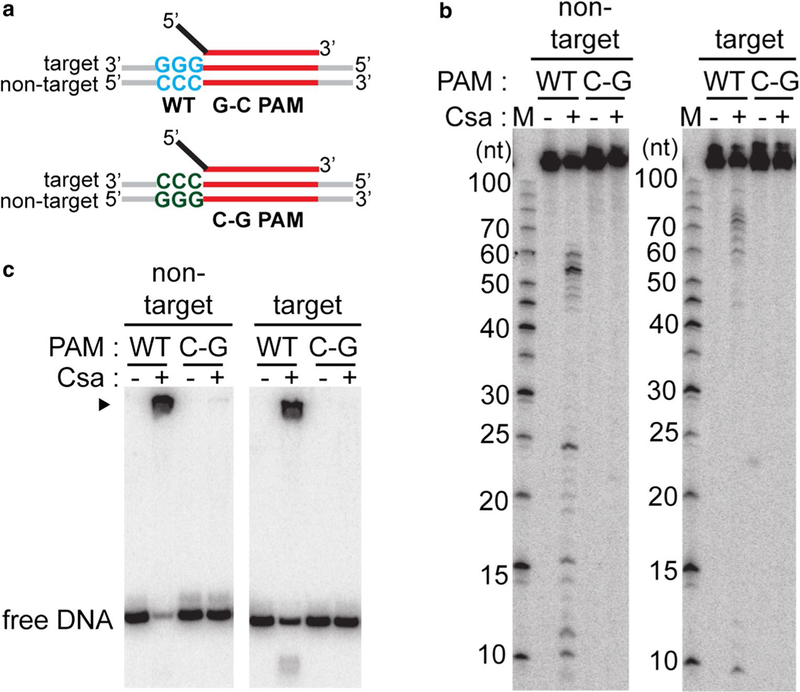Fig. 4.

PAM sequence requirements for DNA recognition and cleavage. a Schematic of double-stranded DNA substrates used in assay: crRNA (top) containing 5′ tag (black) and guide (red), double-stranded DNA (target and non-target strands labeled) with wild-type protospacer (red) and PAM [wild-type (blue, WT, G-C PAM) or C-G PAM (green, PAM sequences mutated in both strands)] b DNA cleavage with Csa crRNP (+, assembled with crRNA, Csa4–1, Cas3″, Cas3′, Cas5a, Csa2 and Csa5) and the specified substrates. 5′ radiola-beled (32P) DNA size standard (Affymetrix, 10–100 bases) is labeled (M). c Correspond- ing gel mobility shift assay of samples in b. DNA bound by Csa crRNP (black triangle) and free DNA is indicated. b and c Reaction in the absence of any Csa protein is labeled (−) and top label indicates location of 5′ radiolabel (32P) in either the non-target or target strand of double-stranded DNA
